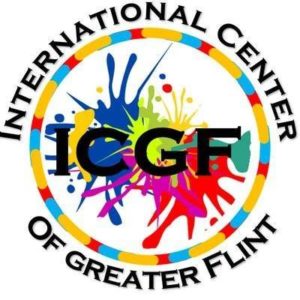By Jan Worth-Nelson
Immigrants are helping offset population decline and contributed more than $100 million in taxes to Genesee County, according to a new national survey based on 2017 numbers.
In recognition of those and other benefits of immigrants in the community, a “Welcoming Week” is underway through Sept. 22. The celebration, which incorporated the Hispanic Heritage Festival at the Flint Farmers’ Market last Friday, continues with a reception from 5 to 7 p.m. Wednesday at the Great Flint Arts Council (GFAC).
 In partnership with the City of Flint, the observance is co-sponsored by the International Center of Greater Flint, the Michigan Economic Development Council (MEDC), the Community Foundation of Greater Flint, 100K Ideas, the University of Michigan – Flint, GFAC and the Mass Transportation Authority (MTA).
In partnership with the City of Flint, the observance is co-sponsored by the International Center of Greater Flint, the Michigan Economic Development Council (MEDC), the Community Foundation of Greater Flint, 100K Ideas, the University of Michigan – Flint, GFAC and the Mass Transportation Authority (MTA).
The Flint-based event is part of a national effort, called “Welcoming America,” which according to its website aims to “build common ground in your community” and supports and encourages local observances around the country this week.
“Our participation in Welcoming Week shows that in our community, Americans of all backgrounds are coming together to create stronger and more prosperous communities,” said Phyllis Sykes, executive director of the ICGF, in a press release.
“ICGF strives to make Flint a Vibrant and welcoming global community and to increase the prosperity of the region by encouraging, building, and sustaining strong multicultural relationships.”
In addition to contributions of taxes, immigrants contributed $25.4 million to Social Security and $8 million to Medicare, the report, from the bi-partisan New American Economy (NAE) detailed.
While Genesee County’s population dropped 2.1 percent between 2012 and 2017, the immigrant population climbed to 6.5 percent, about 2.3 percent of the total county population of about 426,000–about 10,000 people–helping to offset greater losses, the report noted. The report, organized in several sections by congressional district, calculated about 15,000 immigrants in U.S. Congressional District 5 which includes Flint.
Locally, immigrants make up 2.8 percent of the labor force, accounting for 3.6 percent of Genesee County’s science, technology, engineering and math (STEM) workers, 4.5 percent of healthcare workers, 3.9 percent of hospitality workers, 3.2 percent of education workers, and 4.1 percent of the county’s entrepreneurs.
The report suggested those entrepreneurial efforts helps preserve or create 435 local manufacturing jobs “that would have otherwise vanished or moved elsewhere.”
Statewide, the survey reported a total of 705,000 immigrants, or about 7.1 per cent of the population.
In the Great Lakes region as a whole, according to the 2017 data,”an increase in immigrant populations has led to a rebound in the manufacturing industry, a boom in the healthcare sector, and the creation of nearly 250,000 working-class jobs.”
The NAE defines an immigrant as “anyone born outside the country to non-U.S. citizen parents who is resident in the United States. This includes naturalized citizens, green card holders, temporary visa holders, refugees, asylees, and undocumented immigrants, among others.”
The data was supplied through the ICGC and the City of Flint receiving a 2019 Gateways to Growth “national challenge award” from the NAE to receive research tailored to specific locales. Flint was one of 14 communities selected by the NAE for the 2019 research cohort, Sykes said.
“The City of Flint is pleased to partner with the International Center of Greater Flint on this important initiative,” Mayor Karen Weaver stated in a press release. “ICGF has taken the lead in our community to ensure that Flint is an inclusive and welcoming city for all people.”
EVM Editor Jan Worth-Nelson can be reached at janworth1118@gmail.com.


You must be logged in to post a comment.